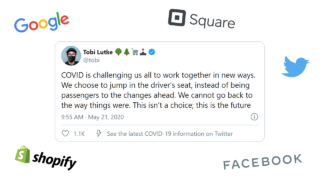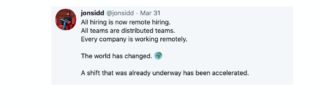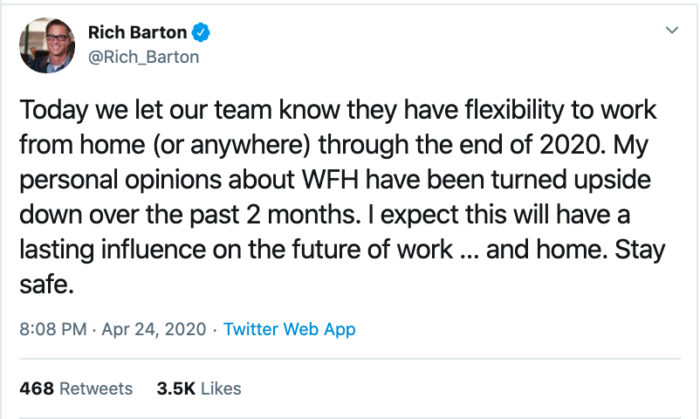
Co-founder of Coursera talks about the importance of investing in Artificial Intelligence
AI adoption has gained traction in the past few years, disrupting almost every industry. But implementing AI-based applications can be challenging. AI pioneer, Founder of the Google Brain Team and Landing AI, Former Chief Scientist at Baidu, and Co-founder of Coursera, Andrew Ng, recently shared how companies can adopt AI to transform their operations.
Here are the key takeaways:
Brainstorm projects and start small
Ng recommends companies start by brainstorming a list of at least half a dozen projects that can use AI rather than diving into just one. Next, he suggests a review of all the possible projects from a technical and business diligence perspective. After a few weeks of analysis, Ng says leaders can pick one or two worthwhile projects and commit to them. The AI pioneer recommends leaders start with small six-to-12 month goals instead of trying to accomplish an expansive vision.
Ng also recommends starting with a small team and then building it up gradually: “Start with a machine learning team of around five people. That teaches you the early lessons you need to build a bigger team.”
Shift your mindset from big data to good data
The Coursera co-founder says companies need to shift their focus from big data to good data. “If you have a million images, go ahead, use them. But there are lots of problems that can use much smaller data sets that are clearly labelled and carefully curated,” he explains.
Ng adds: “When you have millions or a billion users, you can have that noisy data and just average it—the learning algorithm will do fine. But if you are in a setting where you have a smaller data set—say, a hundred examples—then this type of noisy data has a huge impact on performance.”
Don’t wait for your data to be clean and perfect
Ng explains that engineering leaders waste a lot of time waiting for their data to be pristine. CEOs and CIOs often complain that their data’s a mess at the moment and that they’d build a great IT infrastructure in the next two years. To that, Ng says: “That’s a mistake. [Organizations] shouldn’t do that.”
The AI scientist points out that no company—not even the tech giants—have immaculate data. But that’s okay. “Spending two or three years to build a beautiful data infrastructure means that you lack feedback from the AI team to help prioritize what IT infrastructure to build. It is about starting an AI project with the data you already have that enables an AI team to give you the feedback to help prioritize what additional data to collect,” he adds.
AI isn’t just for the tech giants; startups can leverage AI too
Ng remarks that large corporations usually get all the media attention when it comes to AI. However, there is a lot of space for smaller organizations in the industry.
“I’ll just mention a couple of gaps that I find exciting,” he continues, “Today, building AI systems is still very manual. You have a few brilliant ML engineers and data scientists who do things on a computer and then push things to production. There are a lot of manual steps in the process. So I’m excited about ML ops as an emerging discipline to help make the process of building and deploying AI systems more systematic.”
He further adds that there is a lot of room for automation in day-to-day business problems—from marketing to human resources.
Start making investments in AI
Ng suggests that the next wave of AI will transform industries. It will disrupt everything—from manufacturing, agriculture, and transportation to healthcare, according to Ng. Consequently, he says, now is a good time for CEOs and CXOs to think about how AI will affect their industry when it becomes pervasive.
“AI is causing a shift in the dynamics of many industries. So if your company isn’t already making pretty aggressive and smart investments, this is a good time,” suggests the AI pioneer.
Embrace AI, but ensure that your business is people-led
The AI scientist says that ‘AI is automation on steroids.’ Going AI-first might be great for a research lab but not for the business—businesses should not be AI-led. “If I go to a team and say, “Hey, everyone, please be AI-first,” it tends to focus the team on technology. In terms of how I execute the business, I tend to be customer-led or mission-led, almost never technology-led,” he adds.
Artificial Intelligence is altering businesses at a rapid pace and will soon become ubiquitous. Most experts agree AI has the potential to drive tremendous economic growth. The technologies that enable AI, like development platforms, processing power, and data storage, are becoming affordable. As these technologies continue to mature, companies that have yet to adopt AI will feel the pressure to do so to stay competitive. As Ng says, the time is indeed right for companies to capitalize on this highly disruptive phenomenon.
Are you looking to scale your engineering team through AI? Turing can help. Turing’s automated platform lets companies “push a button” to hire senior, pre-vetted remote software developers. Access a talent pool of the top 1% of 700K+ developers with strong technical and communication skills who work in your time zone. There’s no risk. Turing offers a free two-week trial period to make certain your developers deliver to your standards.
For more information, visit Turing’s Hire page.
Deepen your knowledge of AI/ML & Cloud technologies and learn from tech leaders to supercharge your career growth. Attend Turing Data and DevOps Conference
Tell us the skills you need and we'll find the best developer for you in days, not weeks.






















 .
.